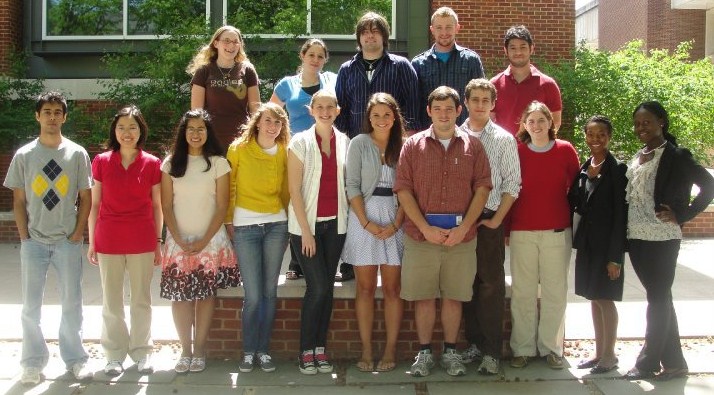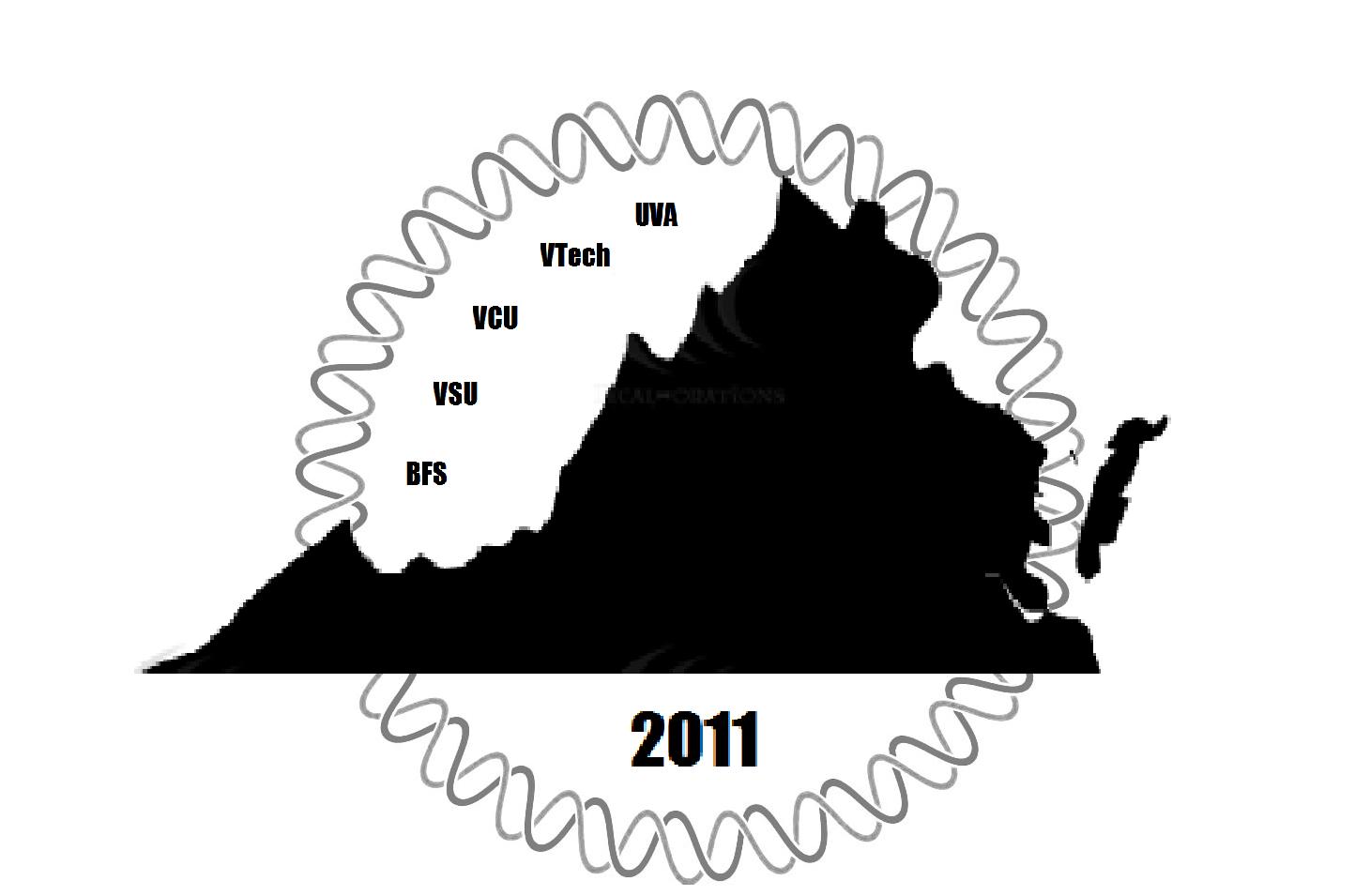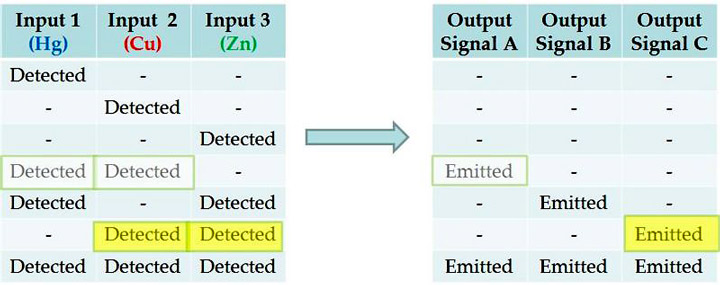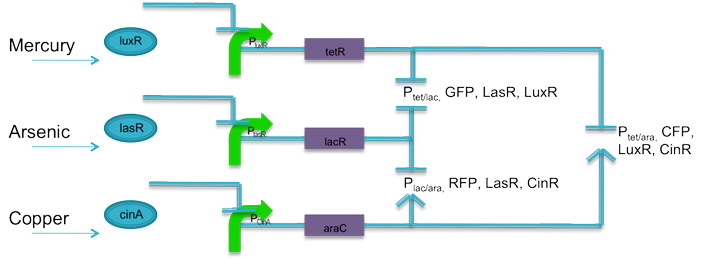Team:Virginia United/Project
From 2010.igem.org
(Difference between revisions)
| Line 125: | Line 125: | ||
===== Abstract: ===== | ===== Abstract: ===== | ||
| - | 'Synthetic biology endeavors to create information processing systems modeled on digital electronics. The use of quorum sensing can help transform an inherently analog molecular signal into a binary response and simultaneously allow the tuning of input response thresholds and signal amplification. This project demonstrates these capabilities through experimentation and modeling. Another candidate for reapplying an electronic engineering technique is the codesign of hardware and software to implement a function. In synthetic biology, codesign might mean implementing a design spec in different expression control regimes and comparing their relative merits. Our work examines the codesign concept by constructing an AND gate in three different design domains. We explore the application of these ideas with an environmental sensor. A unique aspect of our project is the collaborative nature involving five institutions at three locations, which fostered a codesign-like approach using three distinct assembly techniques.' | + | ''Synthetic biology endeavors to create information processing systems modeled on digital electronics. The use of quorum sensing can help transform an inherently analog molecular signal into a binary response and simultaneously allow the tuning of input response thresholds and signal amplification. This project demonstrates these capabilities through experimentation and modeling. Another candidate for reapplying an electronic engineering technique is the codesign of hardware and software to implement a function. In synthetic biology, codesign might mean implementing a design spec in different expression control regimes and comparing their relative merits. Our work examines the codesign concept by constructing an AND gate in three different design domains. We explore the application of these ideas with an environmental sensor. A unique aspect of our project is the collaborative nature involving five institutions at three locations, which fostered a codesign-like approach using three distinct assembly techniques.'' |
| + | |||
| + | ===== Regional Team ===== | ||
| + | |||
| + | ''The Virginia United Team was created as a collaborative effort between five schools, University of Virginia, Virginia Commonwealth University, Virginia Polytechnic Institute and State University (Virginia Tech), Bluefield State College, and Virginia State University. We divided up and worked on separate parts of the project in three different locations in the state and maintained communication through constant emails, Skype calls, and face to face regional meetings. Collaborating on a project of this magnitude with this many people involved was in itself an experimental endeavor that challenged us to develop a project and maintain strong communication and organizational skills that are vital to the interdisciplinary component of synthetic biology. Not only did each individual have something unique to offer to the team, but so did each individual university based on their access to resources that other schools might have lacked. Perhaps one of the most vital components of this project is what we learned from working together to help develop a project that we would not have been able to accomplish individually. Having gained a better understanding of how research can be conducted in a huge group setting has provided us with the experience that will really become instrumental in our future in research and in particular synthetic biology as the need for collaborative projects between schools, states, and even countries becomes a normal part of the research world. '' | ||
| + | |||
| + | ===== Collaborations with Other Teams ===== | ||
| + | |||
| + | ''We helped the software team create a program that can analyze a | ||
| + | construct's DNA sequence and design oligo primers that can be used for USER | ||
| + | fusion. Our team helped by explaining how USER fusion works, explaining | ||
| + | optimal length of primers, and explaining optimal melting temperatures for | ||
| + | the primers. USER fusion is a method for splicing together long strands of | ||
| + | DNA and is convenient for construct assembly.'' | ||
| + | |||
| + | ===== Overview: ====== | ||
| + | |||
| + | ''As the field of biomedical engineering grows, so too does the complexity of genetically engineered systems. Fabricated metabolic pathways are becoming increasingly intricate and expansive: how is one to know if the approach used to synthesize the pathway is necessarily the best approach? Our group, composed of five institutions, strives to show that co-design, a common engineering practice used to evaluate relative efficiencies, can be implemented to select the best design for a system. Using a biosensor for an example of carrying out co-design, we constructed three systems utilizing different mechanisms that can detect inputs and give an output correlating to which input or inputs it senses. To maintain consistency, our systems are designed to use quorum sensing to amplify signal transductionupon input detection. This essentially acts as an on/off switch, allowing the system to be engineered to detect a certain input threshold and giving a binary response.'' | ||
| + | |||
| + | ===== Quorum Sensing ===== | ||
| + | |||
| + | ''Normally, quorum sensing is a mechanism employed by bacterial cells in which signaling proteins are released and passed on to other cells so communicate certain information or to encourage cells in the vicinity to act out certain functions. In our experiment, we wanted to utilize quorum sensing so that when the E. coli cells sensed that there was a metal in the environment, it would not only produce some type of response such as fluorescing, but also initiate the quorum sensing mechanism so that the signal would be amplified and passed on to other cells that would then react and flouress as well. In that manner, instead of receiving a gradual response to the stimuli, we would actually receive a faster more binary response that would be easier to detect and measure. Thus in our experiment, we wanted to employ quorum sensing as an amplification mechanism that would provide us with binary output which would be easier to manipulate and incorporate into a response system.'' | ||
| + | |||
| + | ==== Fluorescent Complementation ==== | ||
| + | |||
| + | Magliery et. al (2004) developed a method for detecting protein binding partners by fusing non-fluorescent fragments of GFP to the two peptides of interest. If the attached peptides sufficiently attract one another, the GFP | ||
| + | fragments will be irreversibly reassemble to form a fluorescing GFP protein. We build on their work by demonstrating how GFP fragment reassembly ("fluorescent complementation") can be used to create AND logic. | ||
| + | |||
| + | Magliery et al. Detecting Protein- Protein Interactions with a Green Fluorescent Protein Fragment Reassembly Trap: Scope and Mechanism. J. Am. | ||
| + | Chem. Soc (2005) vol. 127 (1) pp. 146-157 | ||
| + | |||
| + | The advancement of synthetic biology has opened the doors to almost limitless transcriptional control, given the particular biological species cooperates. The aim of the hybrid promoter circuit is to give one fluorescent output based on any two inputs. To do this, logic AND gates are designed using promoters and protein operator sites. | ||
| + | |||
| + | [[Image:HybridPromoterSystem-720.png]] | ||
| + | |||
| + | |||
=== Part 3 === | === Part 3 === | ||
Revision as of 00:25, 26 October 2010
 "
"




